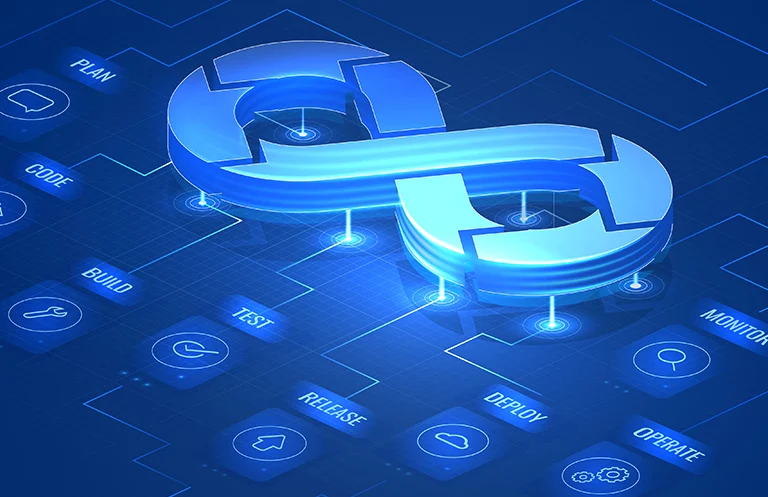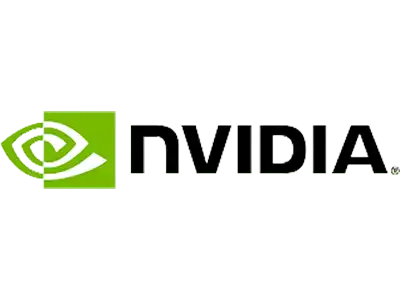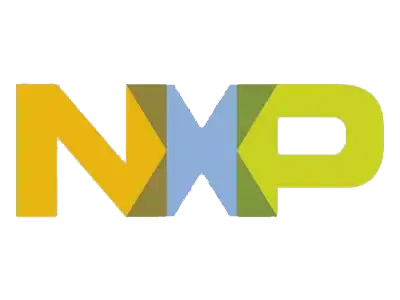To support the widespread adoption of EV vehicles, significant effort is put into the development of EV charging infrastructure. The EV chargers are classified as per their charging speed and type of connectors used.
EV charger Classification
Level 1 – Slow Charging (AC): The charger can be plugged into a standard 120V household outlet requiring no additional installment. It is used for overnight home charging and is compatible with all EVs. However, the charging speed is extremely slow, and it does not support exceptionally large EVs.

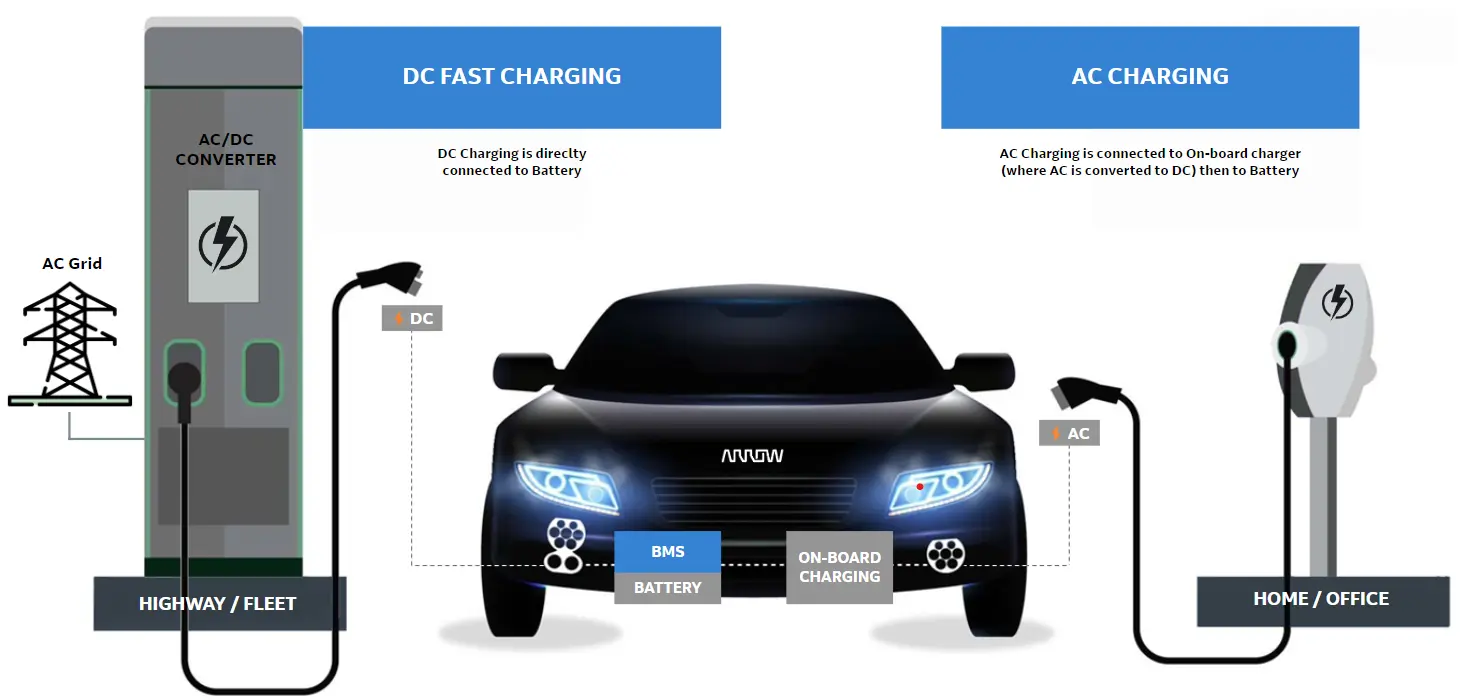
Level 2 – Medium Charging (AC) – One of the most preferred chargers for domestic use as it offers a great balance of speed and cost. The charger needs to be plugged into a 208-240V outlet and requires special installation at either a household or public premises.
Level 3 – Fast/Ultra-Fast Charging (DC) – This charger requires 400V to 1000V+ DC power supply to provide ultra-fast charging. The charger is ideal for heavy vehicles running on highways to enable charging them in 2 to 3 hours. In a typical AC fast charger, the charge of the power conversion happens at the vehicle itself using an onboard charger. All the charger is doing is providing some protection and monitoring the power being delivered to the vehicle. On the other hand, a DC fast charger is doing the power conversion within the charger itself and bypassing the onboard charger of the electric vehicle.
Connection Types
In addition to charging speed and power, each geography has different connector types; whereas Tesla has a unique connector that is applicable to all EV vehicles except in the EU.
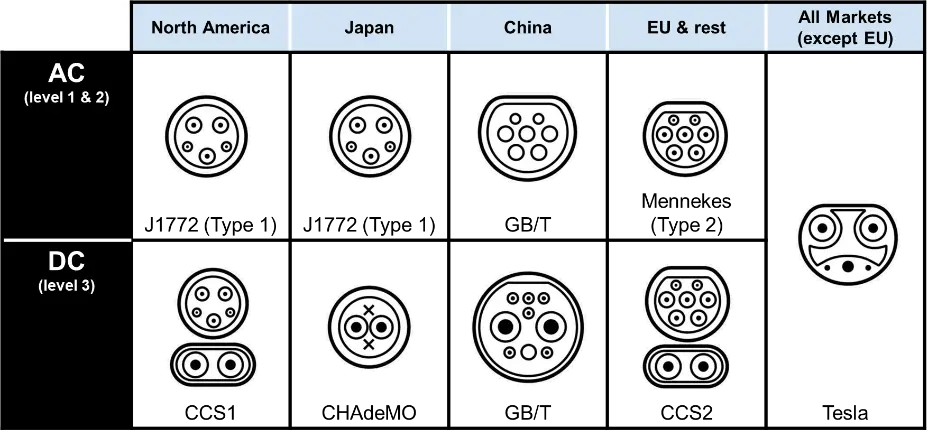
Safety and Security Standards
Safety standards ensure protection of users, vehicles, and the grid during charging. These standards are established to address thermal risks, electrical hazards, fire safety, and standardizing installation and communication interface requirements. The standards are defined based on safety requirements and connections between different countries. IEC 61851-1, IEC 62196, IEC 60364-7-722, UL 2202 / UL 2231 (USA); SAE J1772 are some of the standards.
As EV chargers become intelligent and connected, they are also increasingly exposed to cyber-attacks and hence, cybersecurity becomes critical. Cybersecurity standards prescribe methods for key functions such as secured communication between devices and vehicles, over-the-air firmware updates, two-way authentication, and online payments.
There are international organizations and bodies who have been actively working for consolidation of the different standards. ISO 15118 is an international standard for Vehicle-to-Grid (V2G) communication. It enables smart, secure, and automated communication between electric vehicles (EVs) and charging stations (EVSEs). It provides advanced functionalities such as:
- Plug & Charge (automatic authentication of the vehicle)
- Smart charging (adjusting charging based on the grid load, cost, and user preferences)
- Bidirectional charging (V2G) – the converter can transform the car’s DC energy back into AC electricity and pass it along to another recipient
OCPP 1.6 (Open Charge Point Protocol) is a communication protocol between EV chargers (Charge Points) and a central backend system (CSMS – Charging Station Management System). It is developed and maintained by the Open Charge Alliance (OCA). It enables key functions like remote management, transaction management, smart charging (Load Management), diagnostics, and firmware updates.
Bi-directional Charging
Bi-directional charging (also called V2X, or Vehicle-to-Everything) allows electric vehicles (EVs) not only to draw energy from the grid (charging) but also to send energy back (discharging). This unlocks advanced energy management and grid services beyond just powering a vehicle.
End-to-end Solution
A comprehensive EV Charging solution comprises components and services necessary to support connected EV chargers, including the hardware platform, the embedded software, and the energy management portals for an enhanced customer experience.
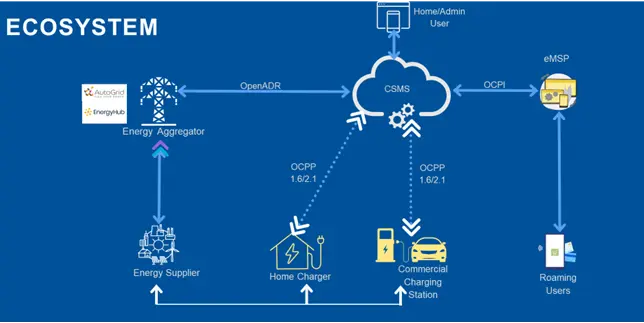
The Charging Station Management System (CSMS) is the epicenter of the entire ecosystem. The CSMS communicates with the home chargers and commercial chargers via OCPP protocol or any custom protocol. OCPP is the open charge-point protocol published by Open Charge Alliance, which is an industry standard. There are two popular versions of this protocol 1.6 and 2.1 and to remotely operate the chargers via either a mobile app or a web portal. The home charger owners or the admin users of the charging station provider systems are accessing CSMS to either send commands to the chargers or fetch information of the charger status or transaction history data. All communication between the consumer mobile app and chargers is via the CSMS.
In the figure, the roaming users represent consumers who are travelling from one place to another and need to charge their EVs on their way. They are looking for available charging stations on their way using e-mobility service providers (EMSP) platforms. They own charging stations which might have multiple charging stations of different companies and these multiple charging stations may have different CSMS systems.
The EMSP platform may integrate with multiple CSMS via an OCPI open charge-point integration protocol. That enables the user’s mobile app of EMSP platform provider to send commands to those chargers to start or stop charging or you can get the status data and transaction data. From those chargers into your EMSP platform.
Energy suppliers and energy aggregators help balance high demand of electricity at a particular time window then these suppliers contact the energy aggregators to balance that demand of energy. These energy aggregators, such as an auto grader energy hub, communicate with the CSMS using an open ADR protocol which is an open automated demand response protocol.
The EVSE manufacturer seeks to manage EV chargers remotely, to provide technical support via the system to leverage vehicles to grid operations and generate management insights for better decision-making.
On the other hand, the EV users seek to trigger or schedule charging operations through the system they want to participate in demand response programs search and reserve commercial chargers and trigger firmware updates for the residential chargers. Charging station owners seek to manage the fleet of chargers, configure pricing, and the payment processing industry.
To kick start, end-to-end software development, eInfochips has developed “Conxero” that offers a set of more than 3000 assets comprising of services, solutions and platforms that enables companies to evolve their connected products into the cloud and accelerate their digital transformation journey while scaling their cloud-enabled products or services. Conxero provides comprehensive support for everything from Device to Cloud with integrated plug and play components.
To get more information, please reach out to marketing@einfochips.com




